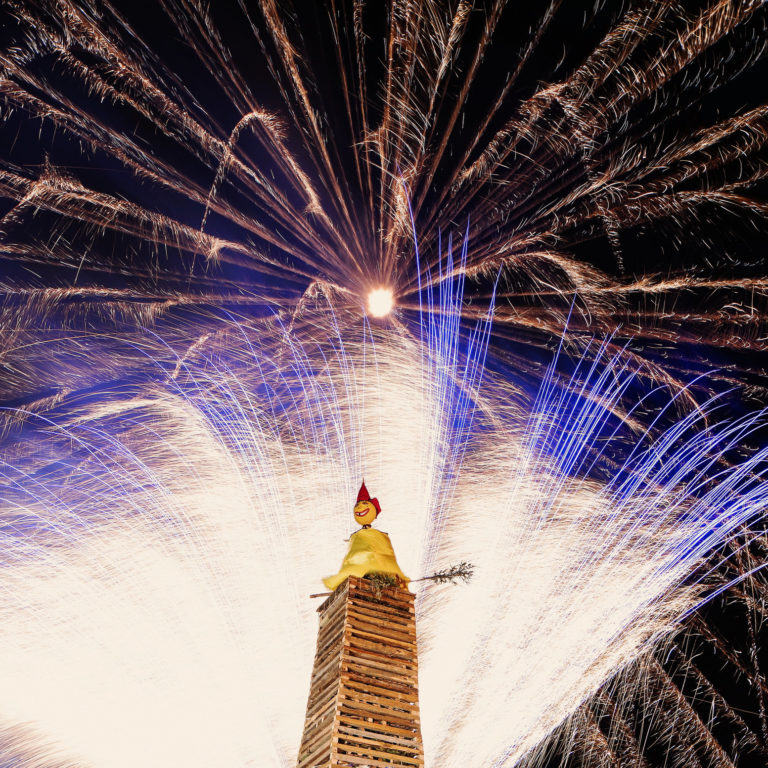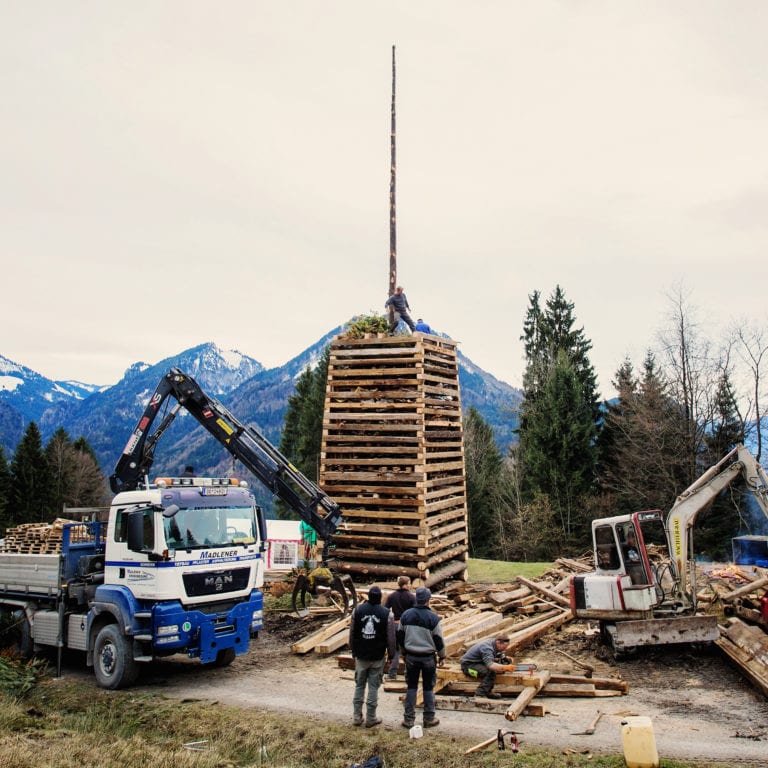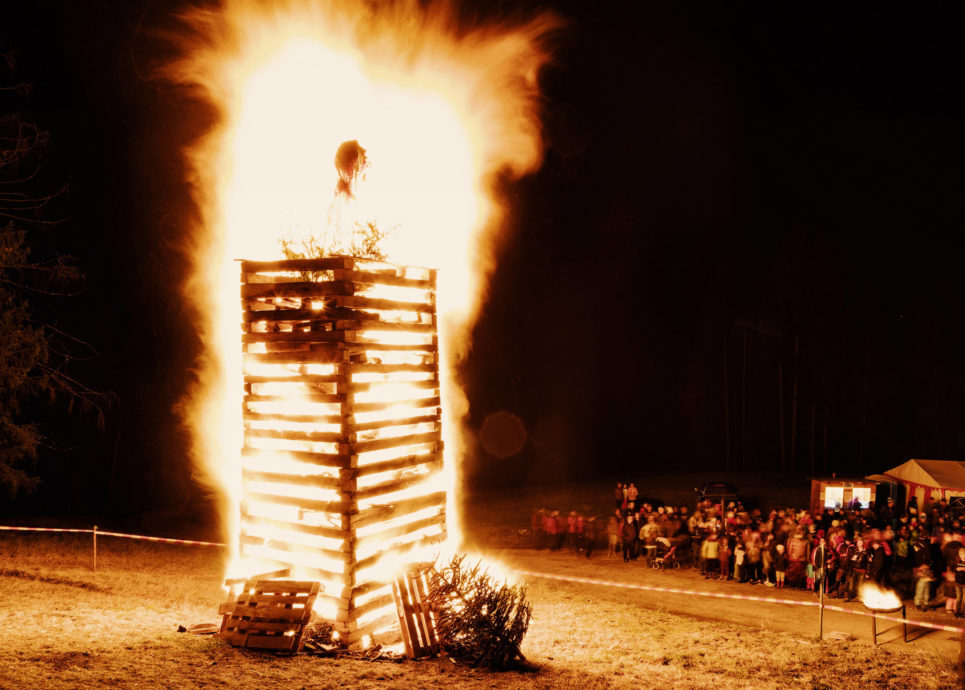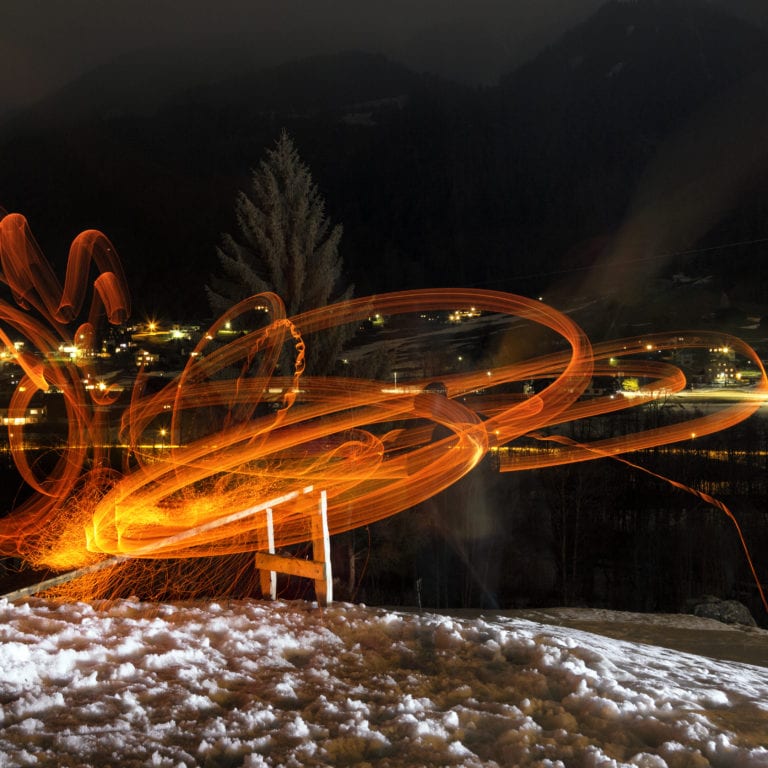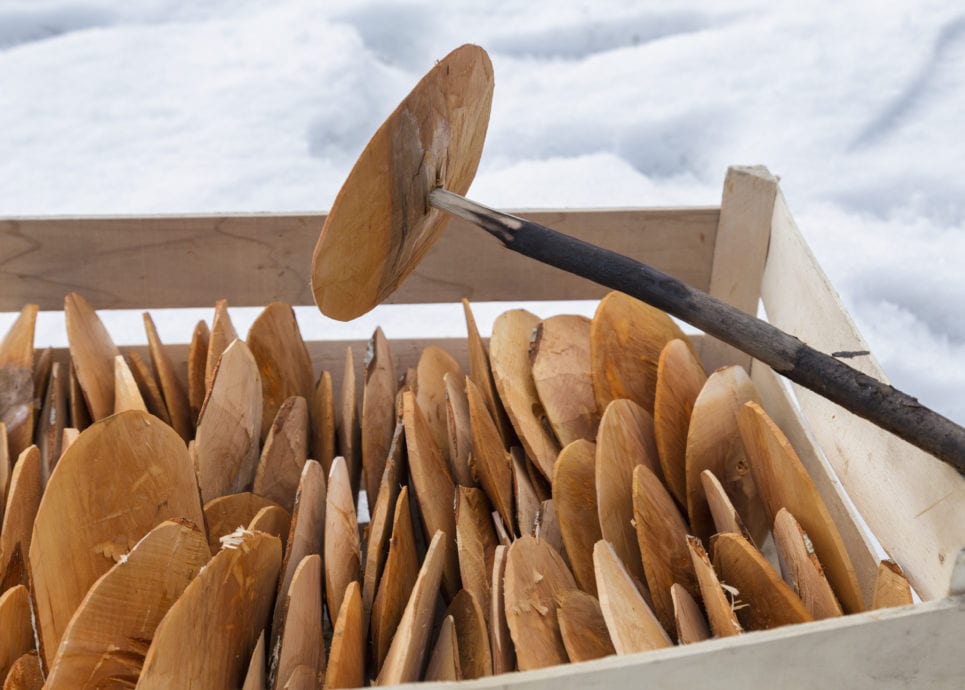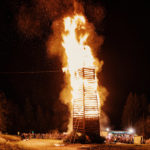Funken (Bonfires): A living custom in Vorarlberg
In many parts of Vorarlberg old customs and century-old cultural heritage are still alive. The most typical winter custom in the Alemannic Vorarlberg is “Funken-Abbrennen” – the tradition of burning off bonfires.
Date: 11 February 2020
Customs in Vorarlberg are predominantly characterised by the rural annual cycle and the Christian faith, but now and then there are also ancient traces of pagan rituals. Many old traditions have disappeared in recent decades. In order to prevent this disappearance, folklorists, chroniclers and historical societies are trying to revive as many customs as possible.
Vorarlberg is Austria’s only Alemannic federal state and thus also the only one which celebrates the so-called Alemannic carnival. Especially in the towns and larger villages of the Rheintal (Rhine Valley) and Walgau there are carnival guilds, “Guggenmusiken” (marching carnival bands), a Carnival Princely Couple, carnival dances with speeches and carnival parades. These events are spread over the entire period of “Fasching”, which begins with the appointment of the carnival prince and princess on 11 November of the previous year and ends with the beginning of Lent on Ash Wednesday.
“Funken-Abbrennen”: A century-old spectacle
For centuries, the Alemanni have been bringing carnival to an end with the custom of “Funken-Abbrennen” – a special ceremony to burn off bonfires that takes place on Saturday and Sunday (29 February and 1 March 2020) after Ash Wednesday. Therefore, Funken guilds all over Vorarlberg build looming bonfires – artful, polygonal constructions – to which they set fire in the evening in a festive ceremony. The highlight is the explosion of the powder filled witch, which is placed at the top of the wooden tower. The burning of the bonfire is accompanied by music, sometimes also fireworks, the traditional “Funkaküachle” eating which are made from yeast dough, and hot drinks. Ever since the beginning, this custom has always been supposed to dispel winter and the ferocious spirits of Carnival.
In Montafon, especially in the village of Gortipohl, the custom of “disc flinging” is practiced. In addition to the bonfires, a two-metre-long, smooth plank is prepared on a block of wood above which about 500 glowing discs will fly over in one evening, each of them leaving shining arches in the dark night sky. Before the spectacle, all discs were formed and processed by hand. In the past, young people and pupils performed the disc flinging, today the “Funkenzunft” guild Gortipohl is responsible for this custom’s care. The origins of this initially pagan ritual go back hundreds of years and since 2016, disc flinging has been included in the UNESCO national list of intangible cultural heritage.
Also in the village of Bürs, the gateway to Brandnertal, not only the “Funken” bonfire is ignited on this special Sunday: Ancient, self-made lampions made of coloured paper additionally illuminate the night. Since these round luminaries resemble peeled “Pomeranzen” – the original name for oranges – they are called “Pumas”. There are 47 different versions of these special lampions which Roland Rettenberger keeps in the attic of his parents’ house throughout the year. Roland’s family has held this duty for many generations. On Funken bonfire evening the lampions are equipped with 100 new candles, followed by a parade through the village of Bürs towards the square, where the Funken bonfire is ignited later that evening.
Selected dates of Funken bonfire events in Vorarlberg and further information can be found here (German only).

